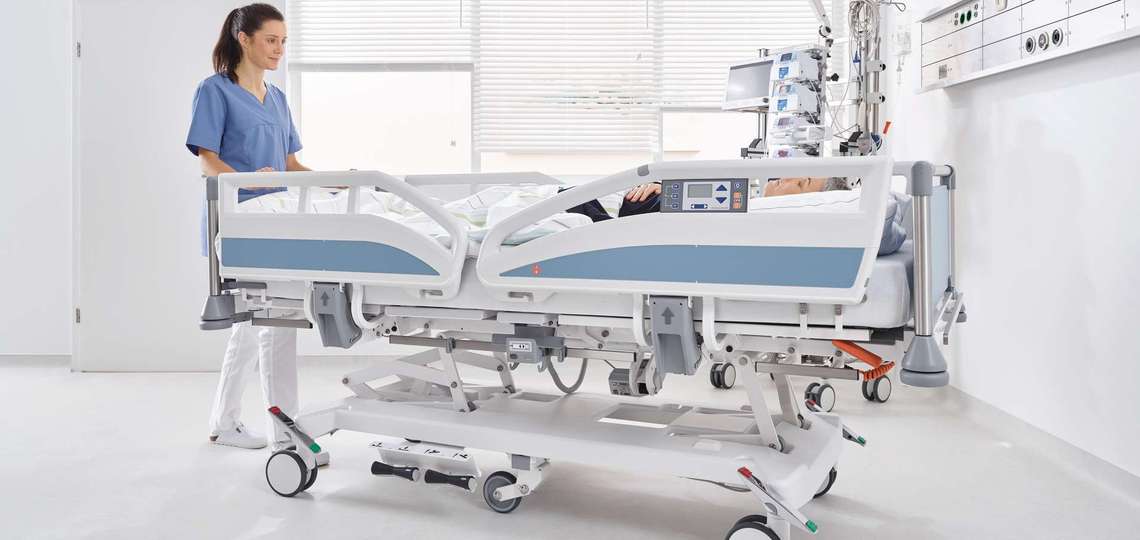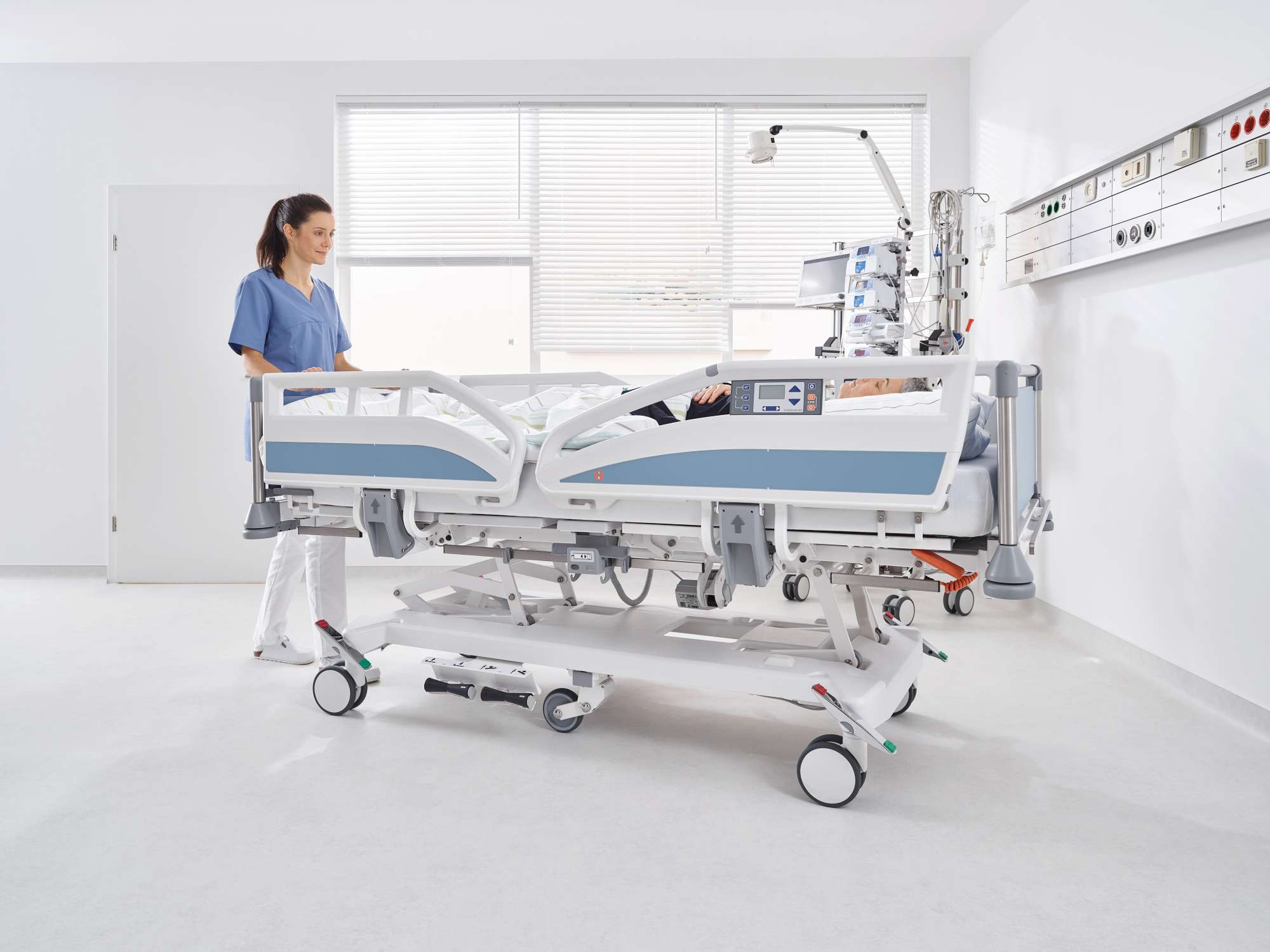
Did you know?
Easy and safe manoeuvring with the directional castor
Easy and precise running hospital beds reduce physical exertion and the risk of collision damage. In addition, they can be controlled by only one nurse, thus reducing the workload on the ward.
Modern beds such as our Evario, Puro, Sicuro tera or Seta pro models have excellent manoeuvring and steering characteristics. A large part of this is due to their directional castor. This is a special castor whose directional stability can be firmly adjusted with the help of a steering lock. In many situations, this leads to significantly improved manoeuvrability. We distinguish between beds with four or five castors.
Beds with four castors
The directional castor can be recognised by its coloured ring. In hospital beds with four castors, it is usually the castor on the head side on the right (as seen from the foot end). In this case, the bed is pushed and steered from the footboard so that the nurse faces the patient. If the beds in a hospital are to be steered from the head end, a foot-side directional castor can also be configured instead at the time of ordering. It is always important that the directional castor is located at the end of the bed opposite the nurse during transport.
On beds with four castors, the directional castor supports straight-line travel in long corridors and keeps the bed safely on track even in turns. If, on the other hand, the bed is to be manoeuvred in a patient's room in the smallest of spaces, it is advisable to release the steering lock.
Beds with five castors
On hospital beds with an optional castor centred under the mattress base, this fifth castor is always also the directional castor. Here it is recommended to use the steering lock in almost all situations. If the fifth castor is locked, it supports straight-line and turn steering and makes it easier to rotate the bed on the spot.
Activating the directional castor
To activate the directional castor's steering lock, please use any brake pedal on the chassis near the castors. This is often a rocker, sometimes with red-green markings at the ends. If the brake pedal is lowered towards the foot end (red down), the bed is braked. If you bring it to a horizontal position, the brakes are released without activating the directional castor. If you lower the rocker towards the head end (green down), the steering lock is active. Our instructional videos clearly show how it works.
If you are using a bed with four castors, please first push it a few centimetres in the desired direction before activating the directional castor so that the castor aligns itself in the direction of travel. This is not necessary for beds with five castors, as the fifth castor functions as a track castor in any alignment.
In addition, whenever you release the brakes, make sure to pull out the mains plug beforehand to avoid damage to the cable or the socket due to the bed rolling away unintentionally. Attach the mains cable to the holding device at the head end while moving.

